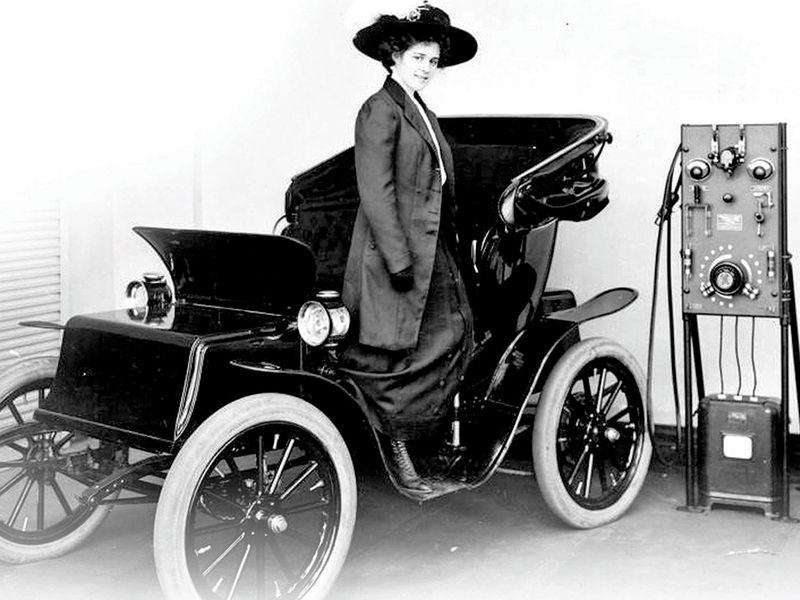
Some aspects of modern electric vehicle ownership have not changed much from the first generation of EVs that were popular a century ago. Back then, as today, there was range anxiety. Part of that was borne out of the charging situation.
Back then there were three ways to charge electric car batteries:
1. The vehicle could be left at the dealership overnight.
2. The battery pack could be removed and replaced with a freshly charged pack.
3. The vehicle could be plugged into one of the few public charging stations.
Home charging also was possible, but it was not widespread. The charging equipment was expensive and not very user-friendly like today’s chargers. Because of exposed wiring and mercury arc rectifiers, a battery charger could be dangerous to have in a home garage, where it may not be shielded well from moisture and could be damaged easily if something banged in to it.
A mercury arc rectifier converts AC power from the grid to DC power for a vehicle’s battery pack. The rectifier — which looks like something from a Flash Gordon movie — contains a pool of liquid mercury in a glass tube that has at least three electrodes.
When electricity from the grid is applied to the mercury, which acts as a cathode, it is vaporized and creates an arc that releases electrons that travel to the anode to create direct current.
Solid-state technology in the 1960s began replacing mercury arc rectifiers, and the last ones, used by the New York subway system, were retired in the 1990s.
General Electric took what may be the first shot at public charging stations with a device called the Electrant (short for electric hydrant). The devices were used in New York and other large cities to recharge the battery packs in electric taxi cabs.
Although there were about 43,000 public charging stations in the U.S. as of July 1, according to the Department of Energy, recharging a depleted pack takes plenty of time, same as it did a century ago. According to charging network Electrify America, up to 80 percent of EVs today are charged at home.

